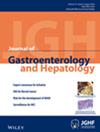Hepatitis B Surface Antigen Seroclearance Rate After Stopping Nucleos(t)ide Analogues in Chronic Hepatitis B—A Systematic Review and Meta-Analysis
Abstract
Aim
To identify factors influencing HBsAg seroclearance rates after stopping nucleos(t)ide analogue (NA) therapy in patients with chronic hepatitis B (CHB).
Methods
We conducted a comprehensive literature search in databases from inception to July 2024. Subgroup analyses and meta-regression were performed to determine factors associated with HBsAg seroclearance, including ethnicity, HBV genotype, NA therapy duration, end-of-treatment (EOT) qHBsAg levels, HBeAg status, cirrhosis status, and follow-up duration.
Results
The meta-analysis included 62 studies (n = 9867) with a pooled HBsAg seroclearance rate of 10% (95%CI: 8%–12%, I2 = 92%) after NA cessation. HBeAg-negative patients showed significantly higher rates than HBeAg-positive patients (11% vs. 5%, p = 0.030). Subgroup analysis revealed higher seroclearance with follow-up of >5 years (18%, p = 0.004), showing significantly higher rates were observed in studies with longer follow-up periods. Caucasians showed a higher rate (12%) than Asians (9%, p = 0.067). Studies adhering to AASLD, EASL, or APASL stopping rules showed no significant differences in rates. Patients with EOT qHBsAg ≤2.0 log IU/mL had higher rates (23%) than those with >2.0 log IU/mL (11%). Re-treated patients had lower seroclearance (6%) compared to those not re-treated (17%, p = 0.178). Meta-regression identified ethnicity, HBeAg status, and follow-up duration as significant contributors to heterogeneity. Egger's test showed no evidence of publication bias (p = 0.1928).
Conclusion
Our meta-analysis highlights the role of ethnicity, EOT qHBsAg levels, HBeAg-status, and follow-up duration in determining HBsAg seroclearance rates. These findings stress the need for personalized NA discontinuation strategies and further research on HBV genotypes and biomarkers to improve treatment outcomes and predict seroclearance more accurately.


 求助内容:
求助内容: 应助结果提醒方式:
应助结果提醒方式:


